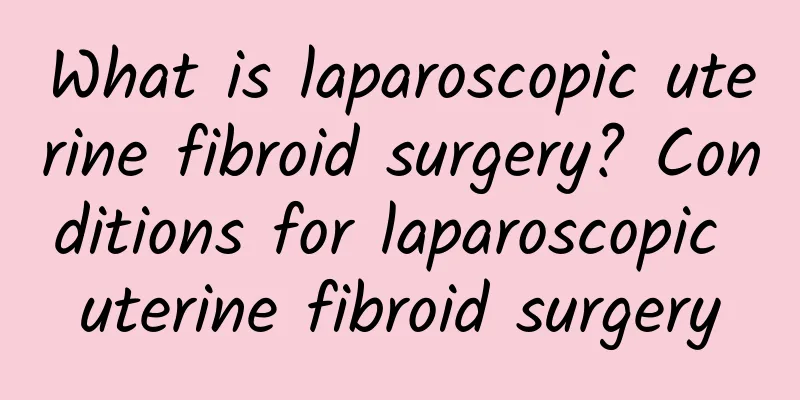Introduction to the three major types of uterine fibroids

|
Uterine fibroids are benign tumors that occur in the smooth muscle tissue of the uterus. The types of uterine fibroids can be divided into three categories according to their growth location and relationship with the various layers of the uterine wall. Let's take a look at what these three types of uterine fibroids are. The three main types of uterine fibroids are: 1. Uterine fibroids all start from the myometrium. If the fibroids are always located in the myometrium, they are called "intramural fibroids" or "stromal fibroids". Intramural fibroids are often multiple, with an indefinite number. There are often one or several large ones, or sometimes many small tumor nodules, distributed throughout the uterine wall, fused in irregular masses, forming multiple uterine fibroids. Multiple uterine fibroids are the most common type of uterine fibroids and are relatively easy to treat. 2. During development, the cervix is involved or reaches deep into the fornix, which can be easily confused with primary cervical fibroids. Intramural fibroids have better blood circulation, and generally the tumors rarely degenerate. However, they can cause severe deformation of the uterine body and affect uterine contraction. As the uterine volume increases and the endometrial area increases, they often cause menorrhagia, excessive menstruation, and prolonged menstrual duration. During the growth and development process, fibroids often develop in the direction of less resistance. When they protrude into the uterine cavity, their surface is only covered with a layer of endometrium, which is called "submucosal uterine fibroids", and they are even only connected to the uterus by a pedicle. 3. If the fibroid develops toward the abdominal cavity, it may be connected to the uterus by only one pedicle, becoming a pedicled subserous uterine fibroid. The blood vessels contained in the pedicle are the only blood circulation of the fibroid. If the pedicle is twisted, the pedicle may necrotize and break off, and the fibroid will fall off into the abdominal cavity, sticking to adjacent organs and tissues such as the greater omentum and mesentery, obtaining blood nutrition and becoming a "parasitic fibroid" or "free fibroid". This type of uterine fibroid can partially twist or block the blood vessels of the greater omentum, causing leakage, forming ascites and other abdominal symptoms. The above is an introduction to the three major types of uterine fibroids based on their growth location and their relationship to the various layers of the uterine wall. I hope it can help you. If you have more questions, you can consult our online experts for free. For more information, please visit the uterine fibroid disease special topic at http://www..com.cn/fuke/zgjl/ or consult an expert for free. The expert will then give a detailed answer based on the patient's specific situation. |
<<: Note: Be careful of irregular menstruation when the following symptoms appear
>>: Routine examinations before abortion
Recommend
What are the drugs for treating uterine fibroids?
If uterine fibroids are not treated in time, it w...
Treatment for endometrial thickening
For some patients with moderate to severe endomet...
Get rid of edema and lose weight! Oriental Billy's private lymphatic exercise
"Oriental Billy", a popular artist in S...
Stay up late and sit for a long time playing mahjong during the Chinese New Year, but be careful of economy class syndrome! Famous doctor reveals: 5 tips to stay away from threats
The Chinese New Year is a happy time for family a...
What to eat and what not to eat for uterine fibroids? What Chinese medicine is best for eliminating uterine fibroids?
Uterine fibroids, one of the common gynecological...
3 tea therapies suitable for amenorrhea patients
Women who have not had menstruation over the age ...
Can I have an abortion at six months? When is the best time to have an abortion?
It is inevitable that men and women fall in love ...
What are the common transmission routes of cervical warts?
The occurrence of cervical warts is mainly transm...
Causes of Endometrial Hyperplasia
With the continuous development of society, many ...
Can I have an abortion if I am pregnant with uterine fibroids?
Whether a patient with uterine fibroids can under...
Strengthening one's own defense ability is a nursing measure for pelvic inflammatory disease that needs attention
During the treatment of pelvic inflammatory disea...
How long does it take to start feeling pain after taking abortion pills? What are the precautions for medical abortion?
Some women buy abortion pills on their own after ...
The cause of cervical hypertrophy can cause uterine connective tissue hyperplasia
If you have cervical hypertrophy, if you do not t...
How to treat Trichomonas vaginitis
How to treat Trichomonas vaginitis? Trichomonas v...
Survey: More than 40% of people exercise less than 3 times a week
The survey found that more than 40% of people in ...









